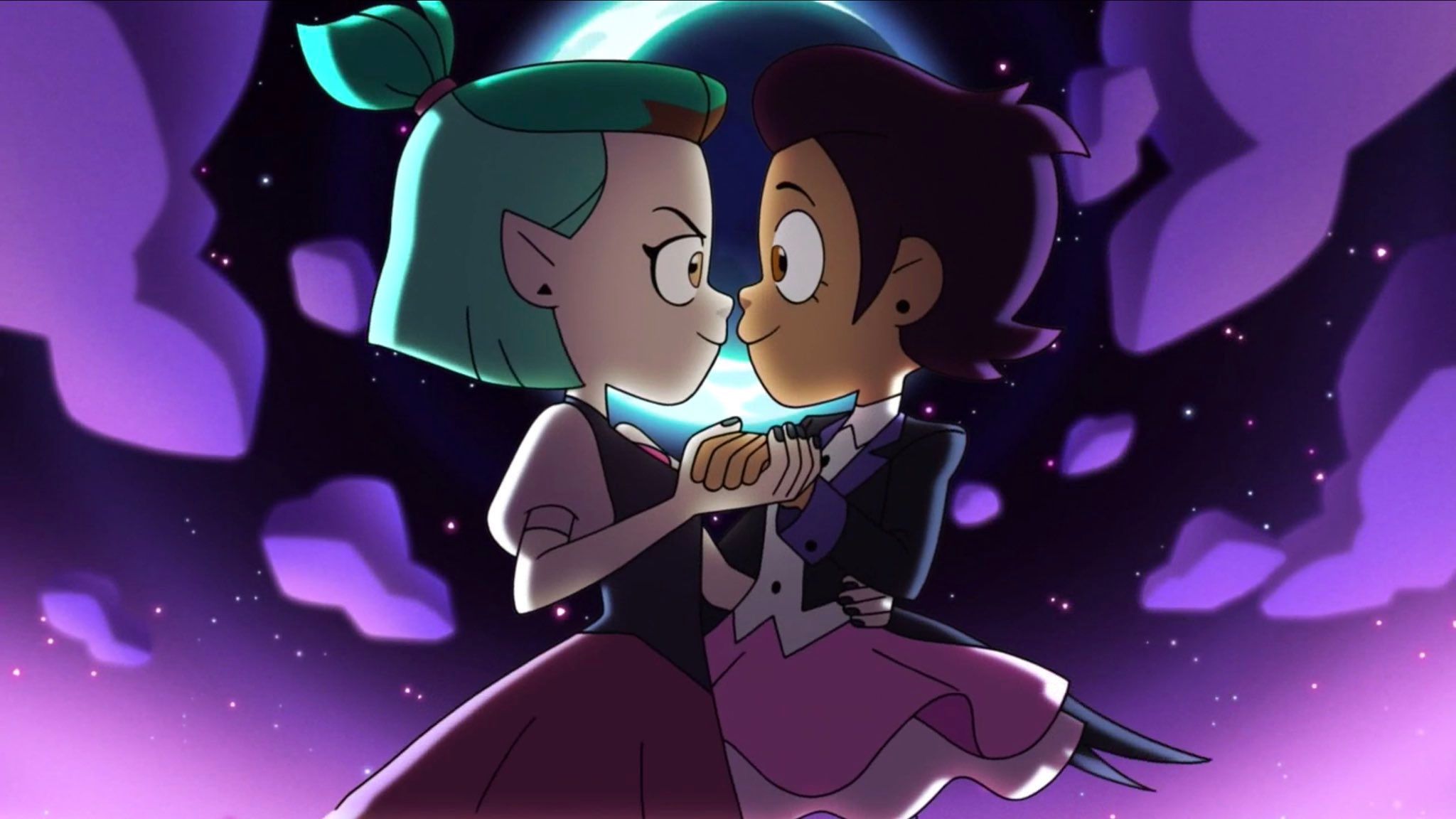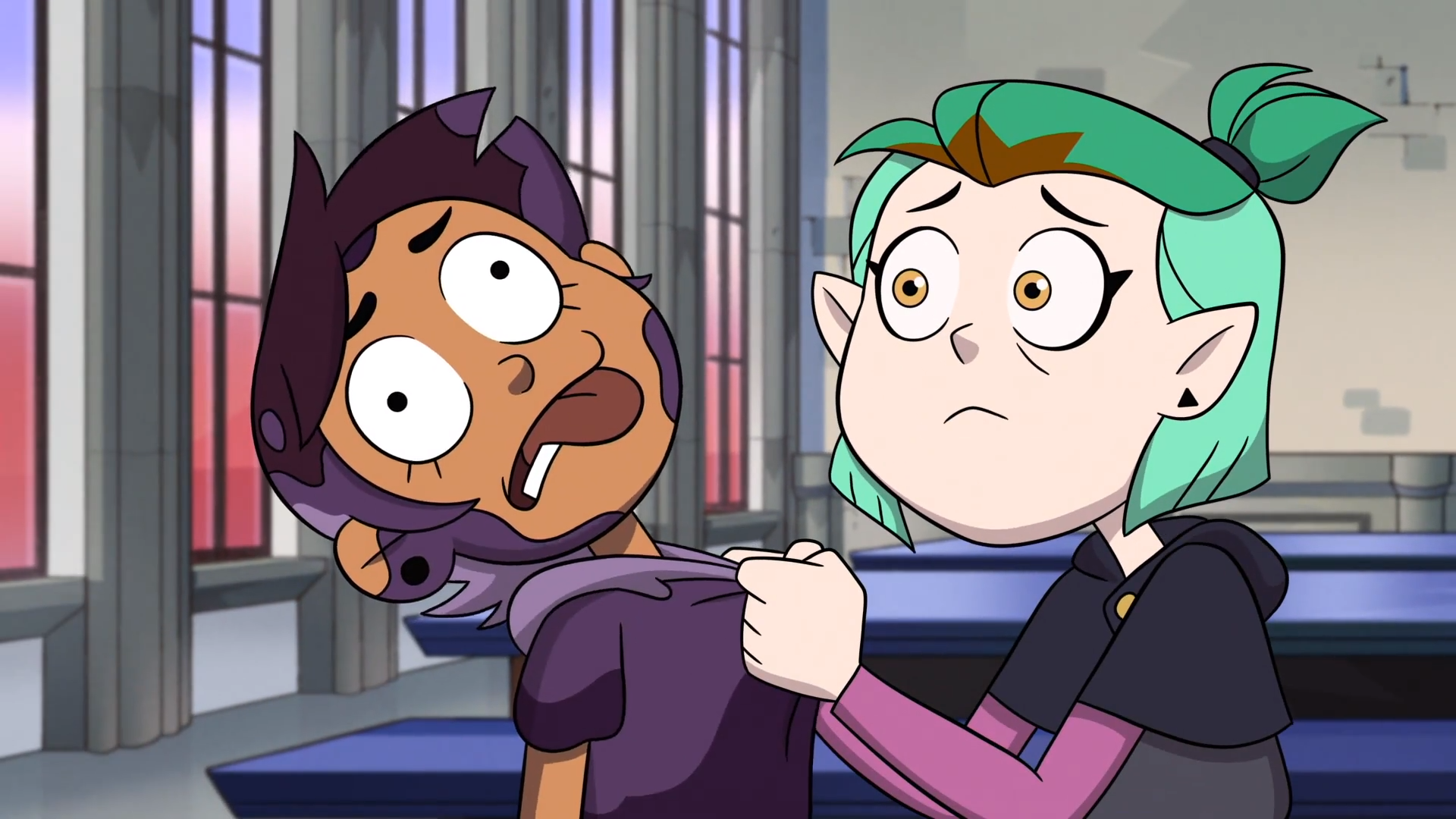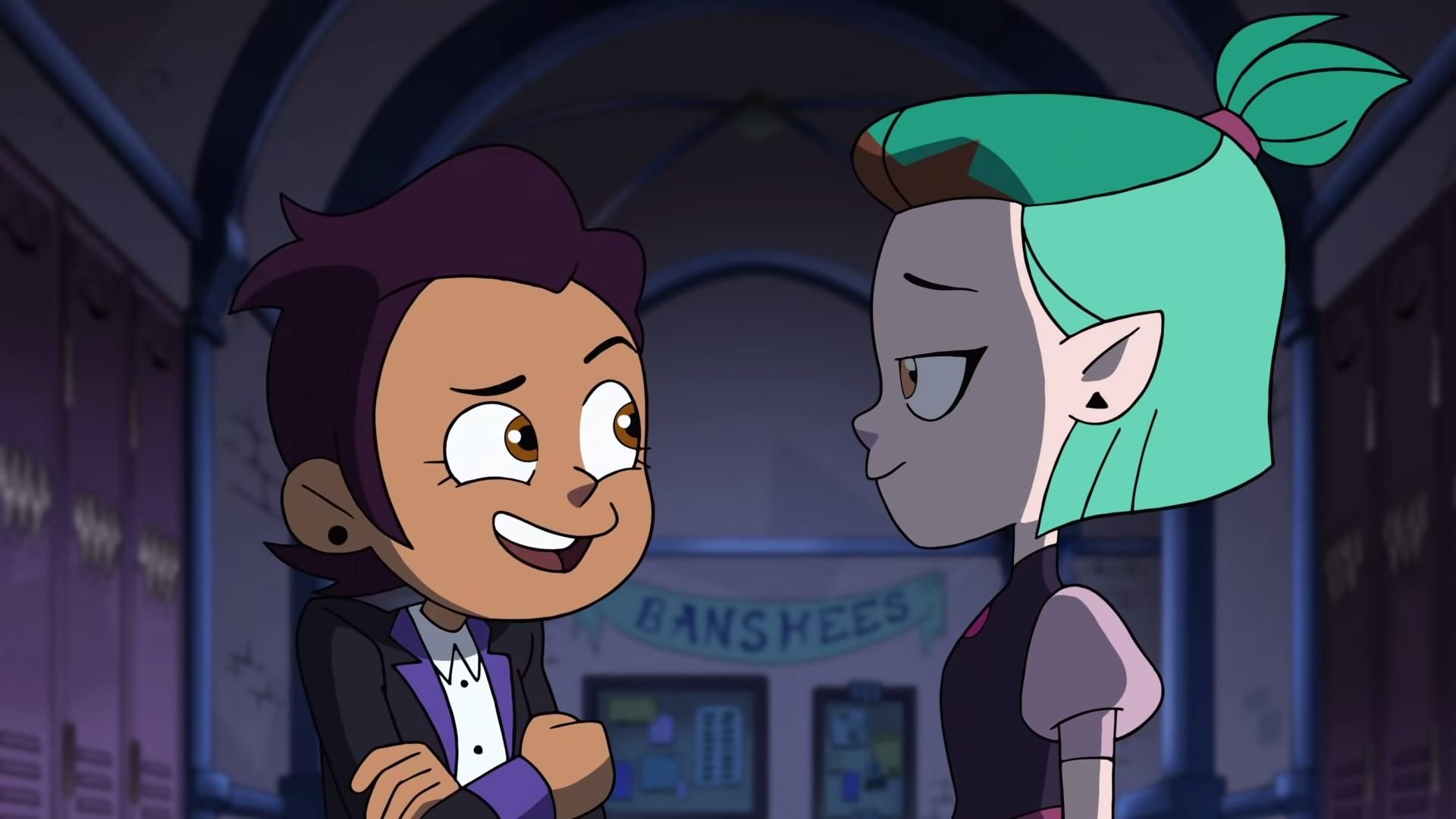When I was a kid, I would have killed for the range of queer animation available to young viewers nowadays. Steven Universe, She-Ra and the Princesses of Power, and The Legend of Korra are all cartoons that aren’t afraid to depict queer relationships as a facet of normality, even if the corporations behind them can sometimes push back against what they’re trying to achieve. I didn’t grow up with a selection of media that encouraged me to embrace my identity, and had to do much of the heavy lifting myself, so I’m delighted that the landscape has changed so dramatically. The battle for representation is far from over, but we’re making magnificent strides each and every day.
I’m almost a little jealous, but welcome the opportunity to experience these stories alongside those who might not have found themselves yet, those who might not have anything but the media they consume to confide in. Dana Terrace’s The Owl House is one such cartoon that depicts queer relationships as adorably natural, showing that childhood crushes on the same gender can be treated with the same agency as their heterosexual counterparts. It isn’t the first time Disney has explored LGBTQ+ themes, but it’s certainly the most deliberate. It’s far more than a lesbian cop in Pixar film or a queer kiss in the background of a single frame of Star Wars. It’s front and centre, and unashamed of it.
If you’re unfamiliar with The Owl House - it follows a young girl called Luz Noceda as she finds herself transported to a strange, magical world filled with spells, witches, monsters, and all sorts of things that previously existed only in her imagination. Our heroine didn’t fit in back in the real world, so this outlandish reality acts as an escape to explore her true self, one where she can learn magic and make new friends without the preconceptions of her past life. It’s a delightful escape many young children will relate to and find solace in, with quirky differences never being treated as a negative or a force for bullying.
The first season follows Luz as she finds a new home, makes new friends, and slowly but surely learns magic. Her most unexpected bond forms with Amity Blight, a witch who is renowned for being a bossy perfectionist who wants nothing to do with anyone beneath her social class - especially humans. But over the course of a few episodes and major events, a softer centre begins to show. Amity is a victim of her upbringing, of overbearing parents who force tradition on children who have no choice but to accept it. Once Amity grows closer to Luz and her friends, potential for a new life begins to make itself known.
Amity’s newfound friendship soon grows into an adorable crush, an infatuation that is hinted at with subtle blushes and small lines of dialogue in earlier episodes. This comes to a lovey-dovey crescendo as Luz and Amity find themselves preparing for Grom Night, which is essentially The Owl House equivalent of a school disco. Each year, a student is crowned Grom King/Queen and selected to take on an ancient creature which emerges alongside the fateful night. It’s a black, gelatinous mass that can transform into someone’s greatest fears, which is a pretty raw deal for someone who has just been labelled as the coolest kid in school if I’m being honest.
Despite her reluctance, Amity is selected as Grom Queen, and must confront the creature knowing that her greatest fear will be exposed, this being a crush on Luz and her identity as a lesbian. In essence, she doesn’t wish to be outed until she is ready, yet another issue that young audiences will relate to. To remedy her anxiety, Luz offers to take Amity’s place, knowing she isn’t nearly powerful enough to best such a beast. When the showdown begins, Amity comes to the rescue, knowing that her worst fears might be unveiled to the entire school. But the person she loves is in danger, so she jumps in to save her with the power of dance. Yes - that is exactly how it all goes down.
The dance sequence is a lovingly queer moment between Luz and Amity, the two possessing a wondrous moment of chemistry where they work together to defeat the monster and deepen their developing friendship. Once the battle is over, Luz asks Amity exactly who she wanted to ask on a date for the Grom, the subject being a sore matter of debate earlier in the episode. Having a brain made of rocks, Luz is oblivious to the fact that her friend has been crushing on her the entire time, which makes the entire situation so sickeningly relatable. Amity’s secret is safe, but she’s now more confident in her identity, knowing that crushing on another girl isn’t something to be ashamed of.
One of the first season’s final episodes is just a compilation of Amity descending into a mess of cutesy embarrassment. Grom is over, and her feelings for Luz are more complicated than ever, so every confrontation with the girl results in sudden blushes, compliments, and unknowing declarations of how much the human means to her. I’ll leave a video below to give you an idea of the situation, but it’s so amazing how hard Dana Terrace and company went when depicting Amity as useless gay disaster. I feel her pain, and I imagine a number of younger viewers can put themselves in her shoes, watching a fictional teenager fumble through the trials and tribulations of puppy love as they learn to accept who they really are.
With the second season of The Owl House set to begin next month, I imagine this focus on queer themes will only deepen as we move forward, exploring the stories of Luz Noceda and Amity Blight in fascinating new ways. I sincerely hope this show is a sign for Disney to embrace stories like this, and to not be afraid of showing that it’s okay to be different, since young audiences deserve to have such messages play a huge role in the media they consume. Pixar is hiring for a transgender lead for a future project, so perhaps these lessons are already being learnt. Time will tell, but I have a feeling Dana Terrace and The Owl House will go down in history as one of the big paradigm shifts in the world of animation.



